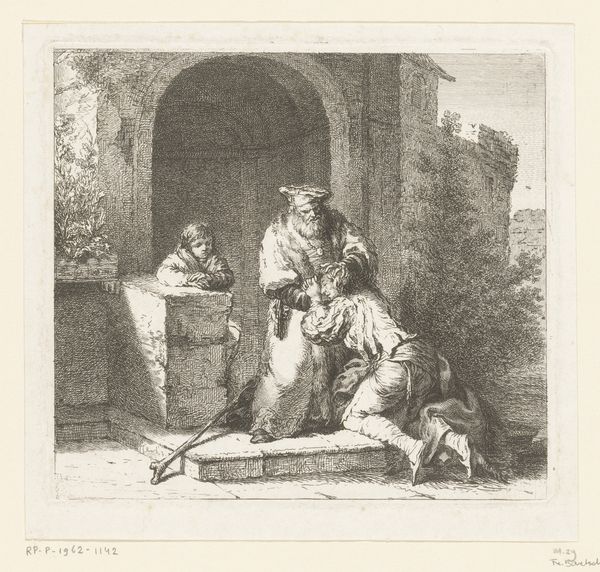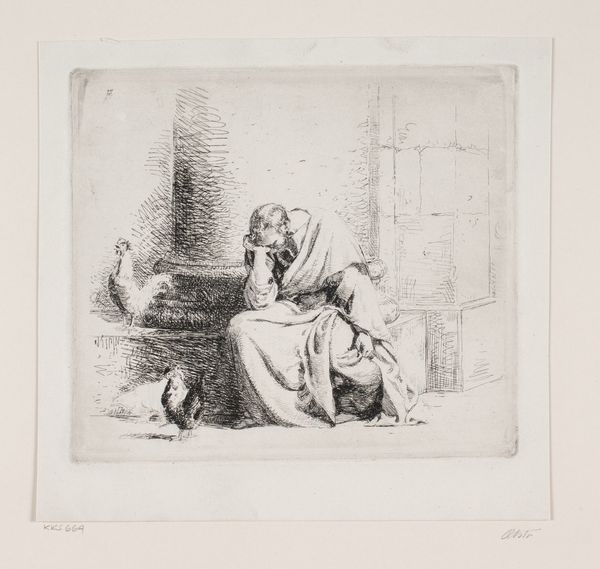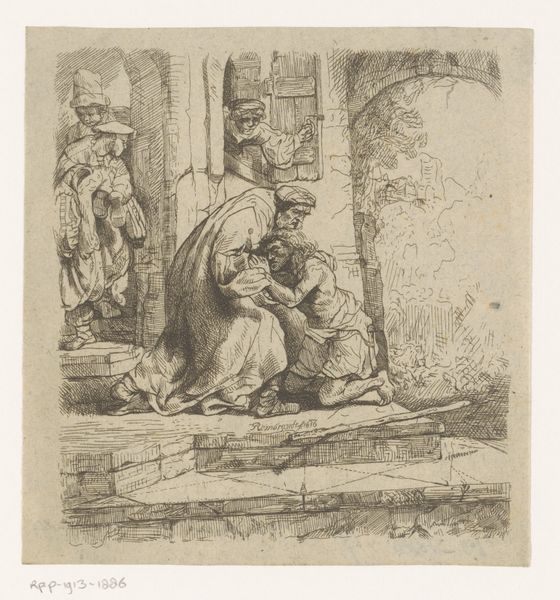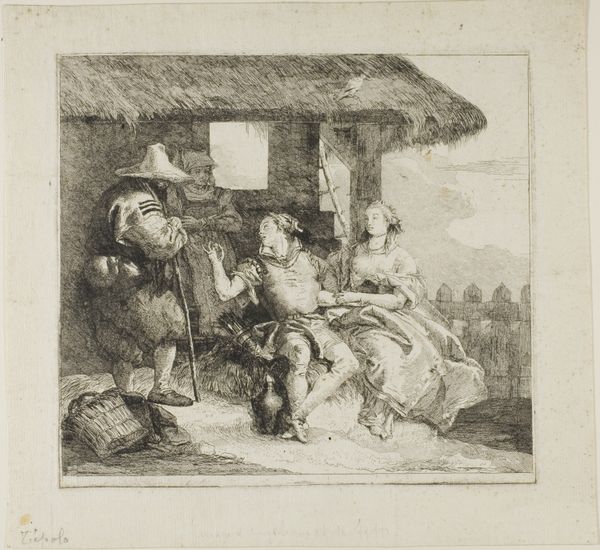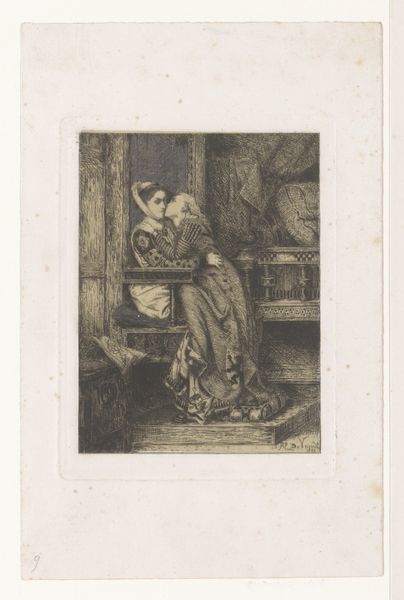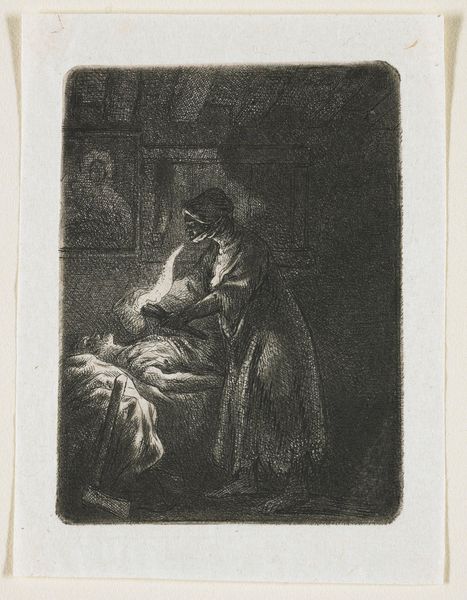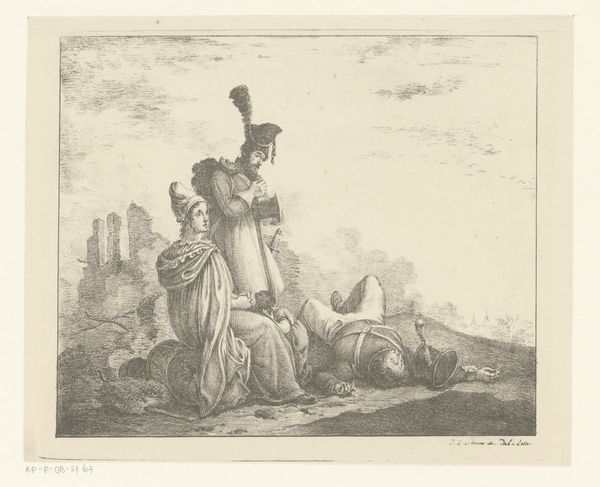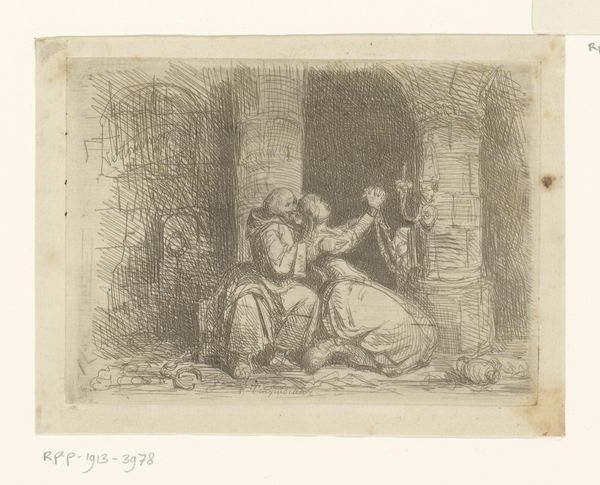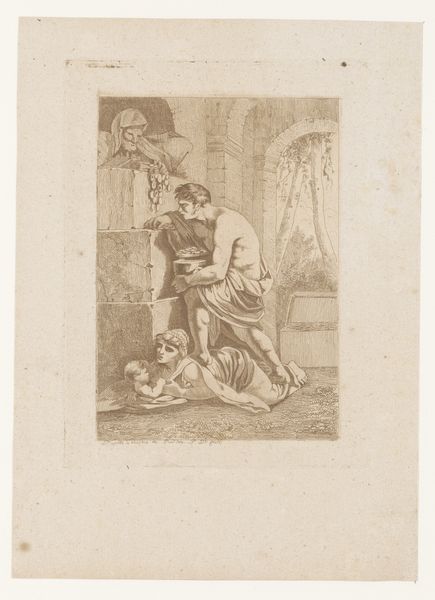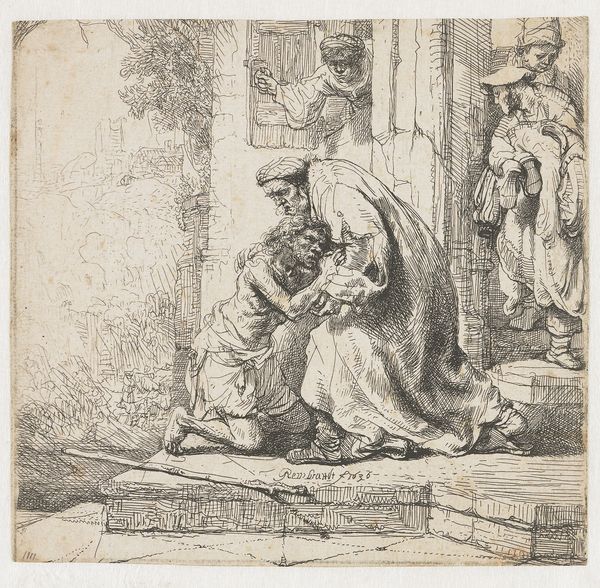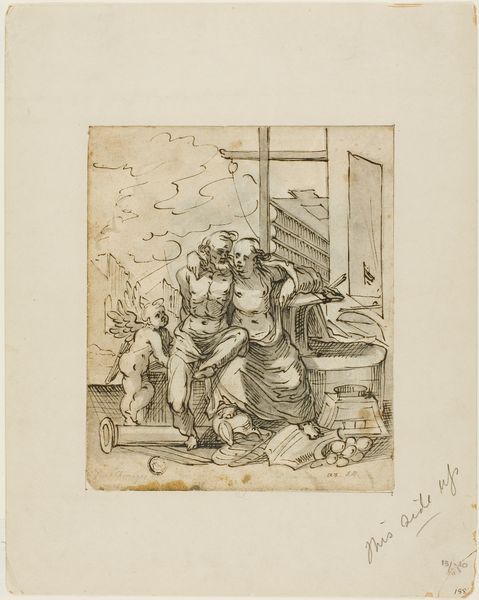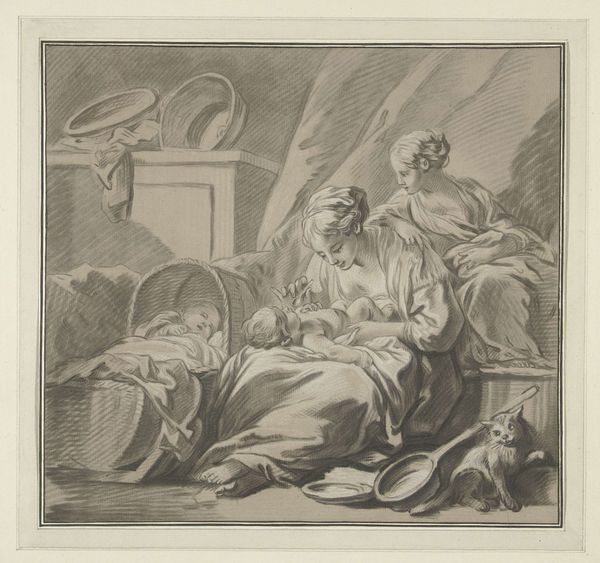
Dimensions: height 200 mm, width 223 mm
Copyright: Rijks Museum: Open Domain
Curator: Let’s explore this engraving and etching on paper currently held at the Rijksmuseum. The piece is titled “Thuiskomst van de verloren zoon”, or “Return of the Prodigal Son,” attributed to Ignace-Joseph de Claussin and made sometime between 1805 and 1844. Editor: The initial feeling is definitely somber, even muted, despite the subject matter. There is such sharp contrast between light and shadow and the detail in the rendering of fabric feels especially tactile. Curator: You know, in its era, works like this engraving served to disseminate biblical narratives and moral lessons to a broader audience, especially in places without easy access to grand history paintings. The politics of accessibility in imagery are at play here. Editor: Absolutely. It allows us to think about representation. Note how the engraving chooses to depict the son’s return not just as a moment of salvation, but as a moment where generational and societal expectations meet an individual act of humility. Are those themes resonating differently today? What does it mean for current intersectional dialogues around, say, forgiveness and shame? Curator: Consider also how Claussin uses landscape and architectural elements to frame the narrative. The solid stonework contrasting with the wilder nature suggests a controlled society observing a deeply emotional and personal moment, reinforcing social norms and moral boundaries of that time. Editor: It makes me question the cost of redemption then. What does that re-integration into society truly entail? Looking at the somber mood evoked through light and shadow, and also, from an intersectional point of view, what did repentance and belonging mean for marginalized figures in that period? Curator: The scale and detail in this work allowed broader viewership and offered social institutions avenues to promote ideological messages across broader portions of the public. The image and production tell a specific historical narrative. Editor: Which begs the question for contemporary viewers. What can this image evoke regarding narratives on belonging and justice, while centering on the complexity and burdens of forgiveness? Curator: Right. Thinking about art's role then as public messaging, it provides interesting lenses through which we might also see echoes of that same public art influence in present day. Editor: Yes, definitely a complex historical print, pregnant with multiple social interpretations across time and audiences.
Comments
No comments
Be the first to comment and join the conversation on the ultimate creative platform.
